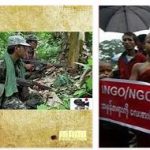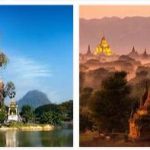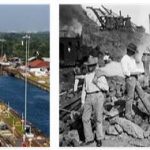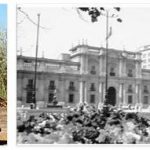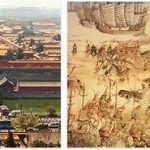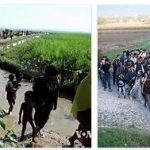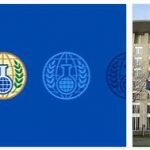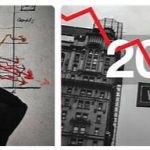Burma is a resource-rich country with around 55 million people. However, due to years of mismanagement, most people live in poverty and deprivation. In the last couple of years, however, reforms have been implemented that offer hope for democracy , more freedom and better welfare.
- Why is Burma back on the international agenda?
- What are the conflicts in Burma about?
- What challenges does Burma face?
- Why is it so important that democratization and economic development go hand in hand?
2: Background
After many years under British colonial rule, the country became independent in 1948. Freedom was fought for under the leadership of General Aung San, the father of Nobel Prize winner Aung San Suu Kyi.
After a few years of more democratic rule, the military took over in 1962. Opposition groups were imprisoned, press censorship was introduced, no elections were held and political debates were banned. In short: a military dictatorship was introduced .
In 1990, the military junta believed that it was so strong that it took the chance to hold an election. This is how the junta wanted to legitimize its board. But the military lost the election. Aung San Suu Kyi, who returned from England to Burma a few years earlier to care for her ailing mother, became involved in politics. She was placed under house arrest. Nevertheless, her party, the National League for Democracy (NLD), won the election superiorly. The military refused to accept the election result, and the MPs were refused to take a seat in parliament. Many of them were imprisoned.
Until a few years ago, the country has been ruled by an iron fist by the military junta, many political opposition figures have been imprisoned and Aung San Suu Kyi has been under house arrest for most of these years.
The country’s authorities isolated themselves from most other countries. Western countries imposed various sanctions to create pressure on the regime and make it respect democracy and human rights. Both the EU and individual countries introduced sanctions such as refraining from investing in and trading with Burma. Furthermore, visa restrictions were introduced for other countries for Burmese leaders. Asian countries chose a different path, and especially China and India have in recent years made large economic investments in the country. It was a problem that the international community in this way was divided in its attitude to the military regime.
3: Changes
The situation seemed frozen until things started to happen in 2010. First, the military junta decided to hold elections and establish a civilian government. Few thought that this would mean a real change. The constitution and electoral system were undemocratic, and the NLD decided not to participate . Therefore, the ruling party won a clear victory. Despite low expectations, the new government, led by President Thein Sein , released several hundred political prisoners.
According to NEXTICLE.NET, Aung San Suu Kyi was released from house arrest, and the president began a dialogue with her. Press censorship was reduced. So much positive happened that the NLD decided to run in a by-election in 2012, and the party won 43 of the 44 seats that were up for election.
Aung San Suu Kyi is now a member of parliament and participates in political life. She has traveled to several countries, including Norway in the summer of 2012 . There she gave her Nobel speech, as she did not have the freedom to come and receive the prize she was awarded in 1991. President Sein has also broken out of previous isolation and visited several countries. He was in Norway recently. Most sanctions from Western countries have now been lifted .
Burma has changed enormously over the last two years: in 2011, it was not possible to talk openly about politics or to mention Suu Kyi’s name in public. Today there is a whole new, open atmosphere and a fairly free debate.
4: Meetings with the leaders
I (Kjell M. Bondevik), ed. I met Aung San Suu Kyi for the first time in 1997, a few months before I became Prime Minister. Her struggle for freedom and democracy made a strong impression. I promised her, and committed myself, to supporting this fight for as long as necessary.
This support is still needed. But at the same time, it is encouraging to see that the match has yielded results. Therefore, it was a great pleasure to meet her again in Burma in 2011 and 2012. Then we could discuss her work in a new situation characterized by the dialogue she had started with the president.
It was a highlight when Suu Kyi came to Oslo in June 2012 and among other things visited the Oslo Center for Peace and Human Rights. She wanted an opportunity for dialogue, and we facilitated this, among other things, by inviting Burmese exiles
to talks at the center.
It was also a clear sign of a new era when I was received by President Thein Sein in the Burmese capital Naipyidaw both in 2012 and in 2013. The President, who was previously among the highest ranked in the military junta, seems sincere in his intention to lead the country towards democracy. Furthermore, it was nice to meet him again when he paid an official visit to Norway at the end of February this year.
5: Not democracy – yet
There is no democracy in Burma (see facts) yet. But the hope is that the country is in a transition phase towards a democratic system of government. The big test of this will be whether the announced election in 2015 will be free and fair. Before Burma gets there, there are several challenges along the way:
There are still political prisoners in Burma. The opposition demands that these be released so that they can participate freely in political life. The president has praiseworthy set up a committee to review lists of suspected political prisoners and seek agreement on who these are. The aim is release.
Amendments to the constitution are another main demand from the opposition. They demand that it be changed so that the privileges of the military are removed . They also want to repeal a clause preventing Aung San Suu Kyi from becoming president. The question is whether her party will participate in the election if this does not happen. No formal process has been initiated for changes to the constitution. The government refers to the parliament. It is said that the relationship between Parliament President Shwe Mann and Suu Kyi is constructive. Maybe it can lay the foundation for a change process.
Many in the smaller political parties and among the ethnic groups will be concerned that the electoral system gives various political groups and ethnic minorities a reasonable representation at the next election. Democracy means not only that the majority decides, but that minorities are also taken into account and that they get their votes in the National Assembly.
An important question in the future will be what policy Norway and other countries should pursue towards Burma. Perhaps “whip and carrot” will be the most effective: Carrot can be aid and financial investment, the whip can be political and democratic pressure and the possibility of reintroducing sanctions if developments should take a wrong direction.

